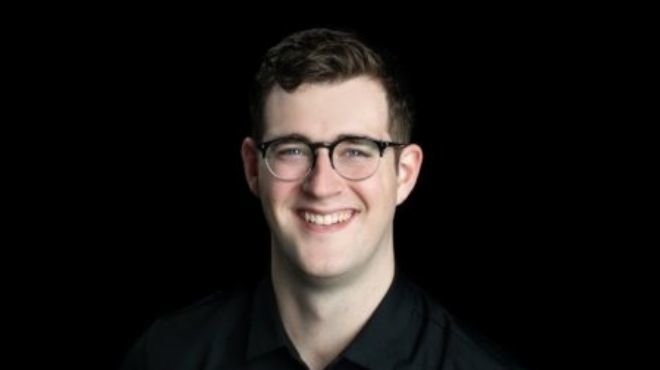
Taking risks and making ‘cool’ discoveries motivates Schulich Leader alumnus
For 10 years, the Schulich Leader Scholarships program has been creating the next generation of technology innovators by supporting exceptional STEM students. To mark this milestone, Dal caught up with three Schulich Leader alumni to find out what they’re doing now and what the scholarship means to them. In this installment, meet Jack deGooyer.
Jack deGooyer (BEng’21) works in a field so cutting-edge, sometimes he thinks it “doesn’t sound real as a topic.”
A Schulich Leader and Rhodes Scholarship finalist while he was at Dalhousie, deGooyer is now a Master’s of Applied Science student at the University of Waterloo and one of 28 Schulich Leaders Dalhousie has welcomed since the Schulich Leader Scholarships program started a decade ago. But before winning a Schulich Leader Scholarship — which fully funds undergraduate studies in science, technology, engineering or math— deGooyer wasn’t even sure what he was going to study in university.
As a student at C.P. Allen High School in suburban Halifax, deGooyer says his plans were vague: maybe law, maybe sciences. But the scholarship helped crystallize his choices.
Scholarship gave him confidence
While at Dal, deGooyer gained experience working in Jeff Dahn’s battery research lab and he completed a co-op term at Tesla’s lab in Halifax — both which he says were ideal placements for him: “I’m very interested in the way the batteries are cycled and measured, and all the controls required to keep them at the right temperature and the right states.”
Now, his innovative graduate work focuses on using quantum photonic nanowires as super-sensitive photodetectors designed to biomedically image (and hopefully diagnose) degenerative eye diseases. Having the Schulich Leader Scholarship, deGooyer says, gave him the confidence to take risks in the field. “I might as well swing for the fences,” he says.
Quantum photonic nanowires’ applications include super-sensitive photon detectors and low-powered quantum computing. “It all sounds very fancy,” deGooyer says, He explains: “With the detector, if you point it, let’s say, up at the stars, you’d be able to detect space debris from the ground with quite a high resolution. And from the single photon source side, you can use really, really fun math to send light, using as much control as you can, so that it interacts with other objects in such a way that it achieves computation.”
And in case that’s not clear, he sums it up even more simply: “You can make light do math for you, which is really cool.”
Saving power and seeing the innately beautiful
One of the advantages of this type of quantum computing is that it uses a small fraction of the power of current super-computers. The amount of energy required to run a quantum computer is “minuscule” deGooyer says.
Asked if he feels optimistic about the future, deGooyer says, “Oh, I think you have to be.” He is heartened by what he sees as a greater recognition among engineers that their work takes place “inside larger systems,” and that they need “to be careful about the way in which their work impacts others.”
And, of course, the work is also just really, really cool: “I do think there is something just innately beautiful about having so much information in such a small space, and how you can get the universe to do the math for you.”
For more information about Schulich Leader Scholarships, visit: schulichleaders10.com. If you’re a company looking to hire Canada’s top STEM talent, please contact us here.